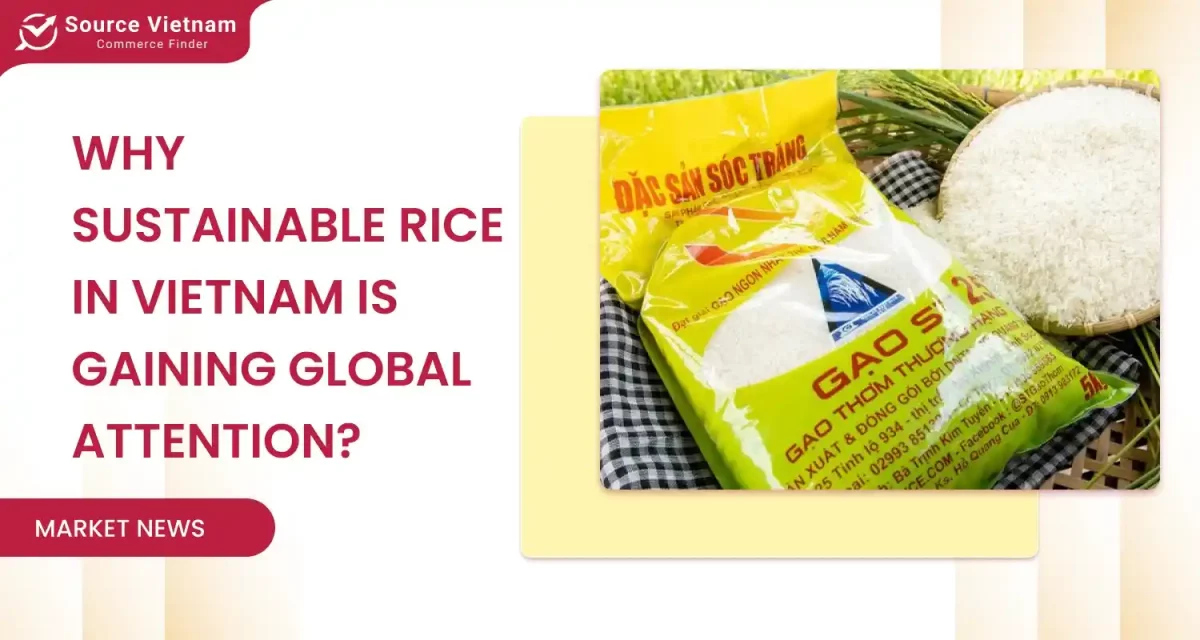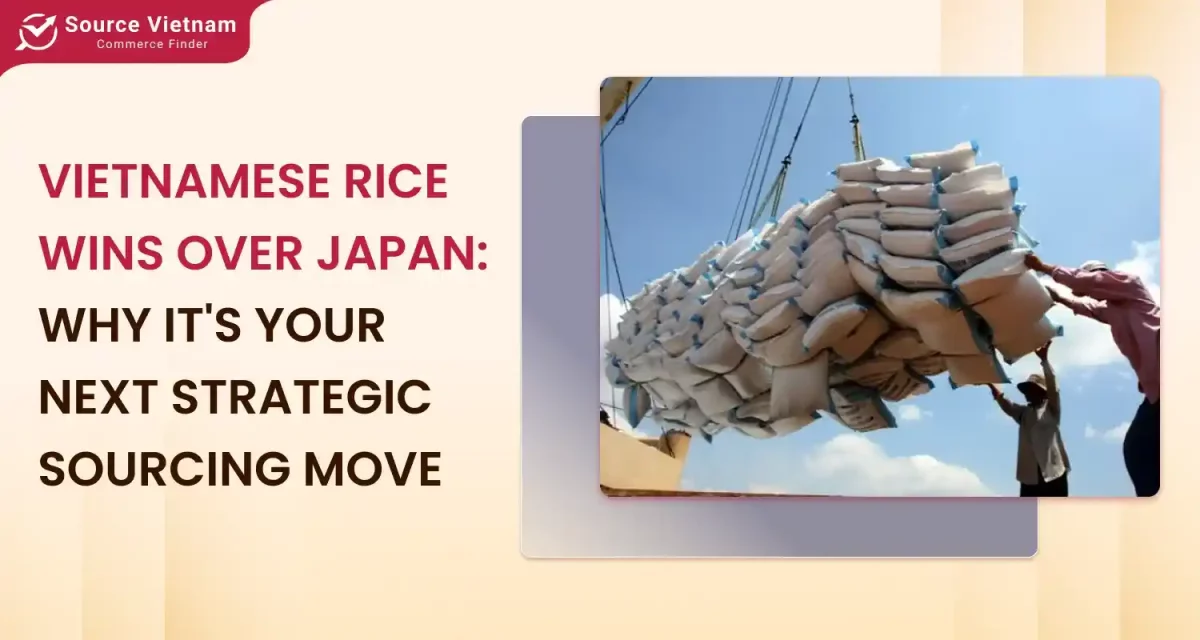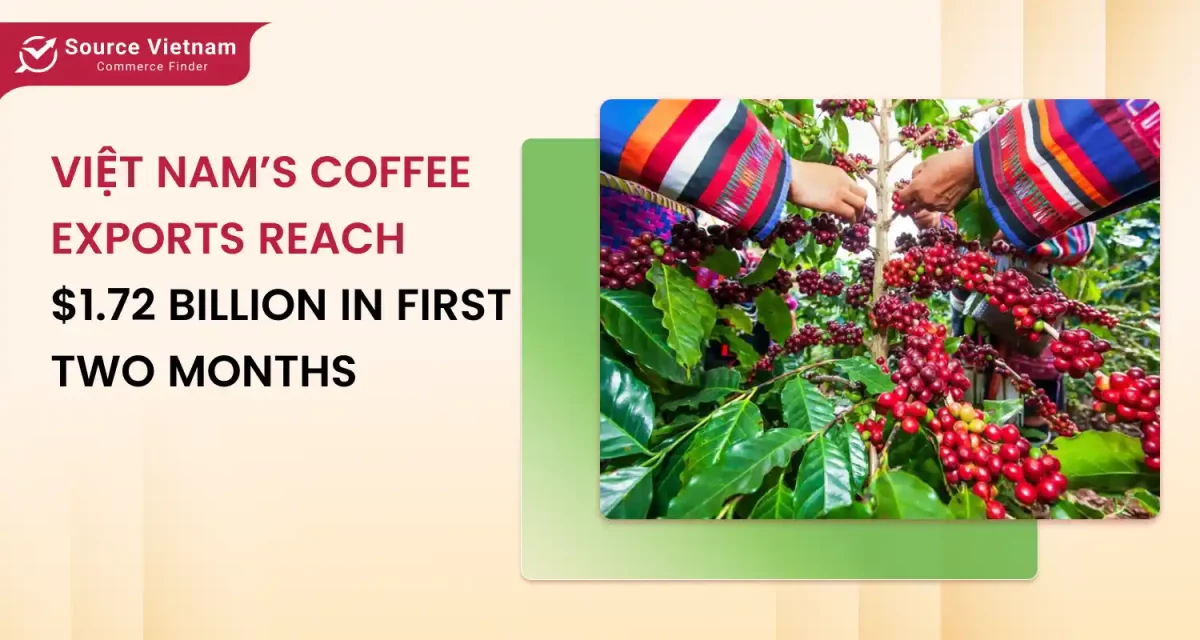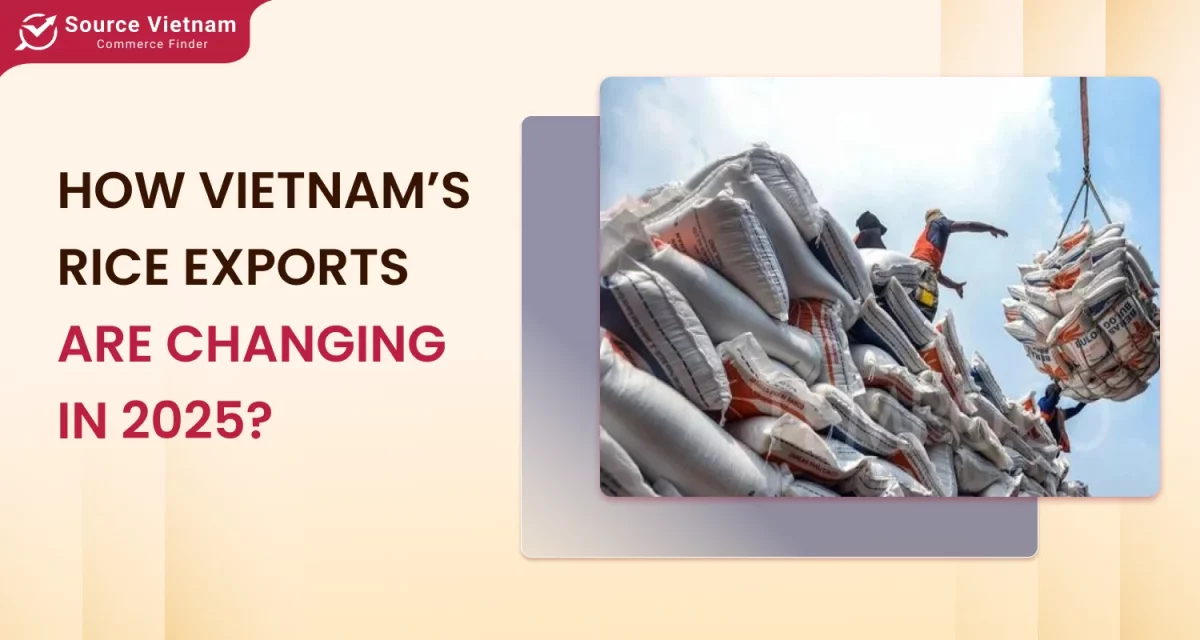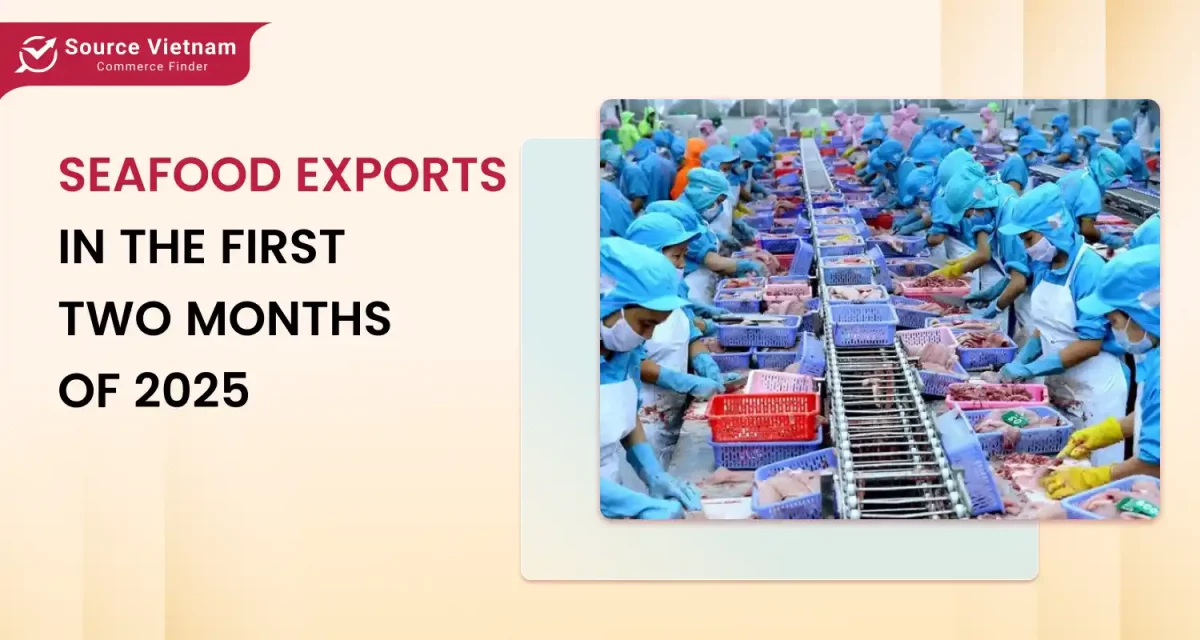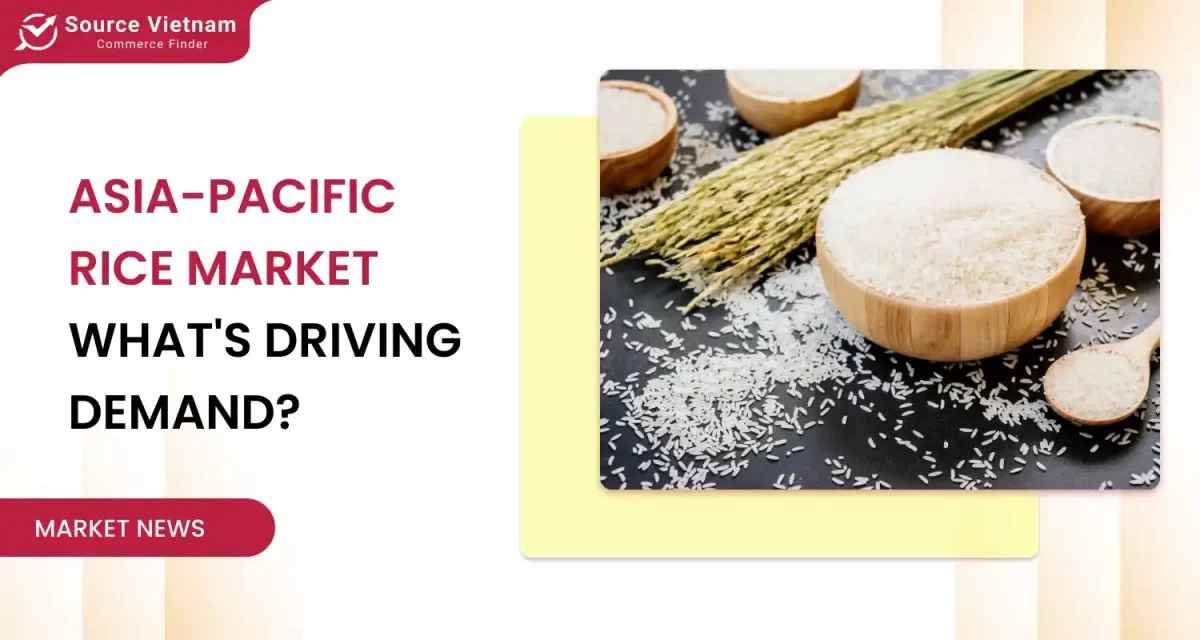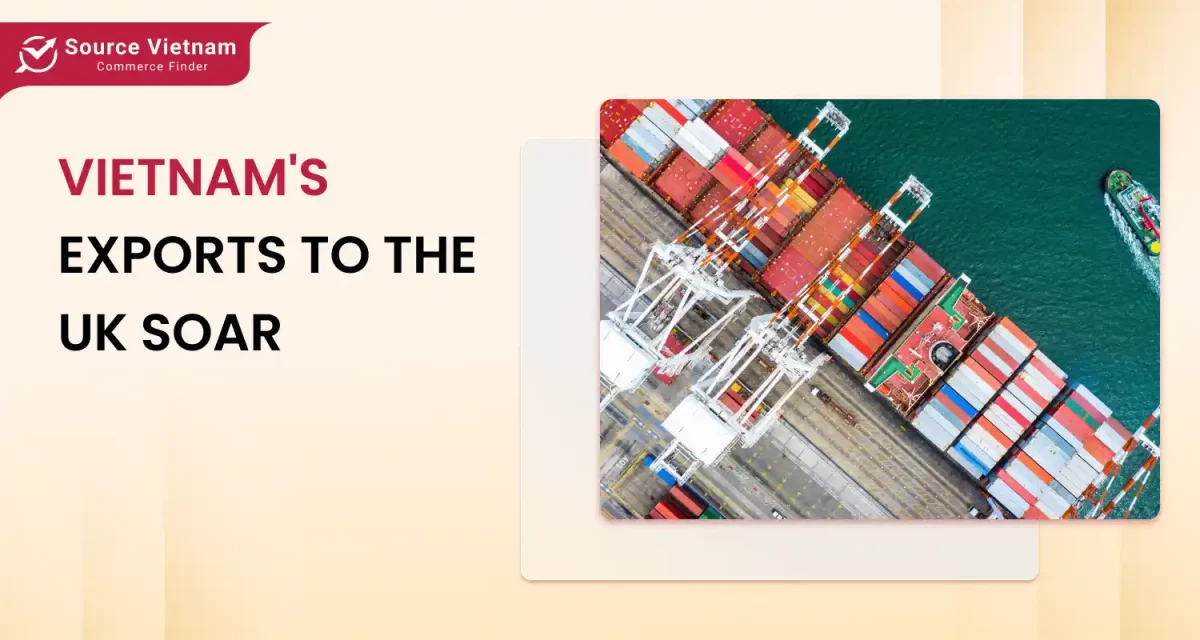Vietnam is considered a country with the largest rice production output in the world. In recent years, regarding rice production and export, Vietnam has made many achievements that are considered one of the remarkable contributors to the national economy. To better understand its beauty, in this blog, we will explore many interesting things about how is rice grown in vietnam. Let’s go through ancient history to modern techniques to preserve this profession until now.
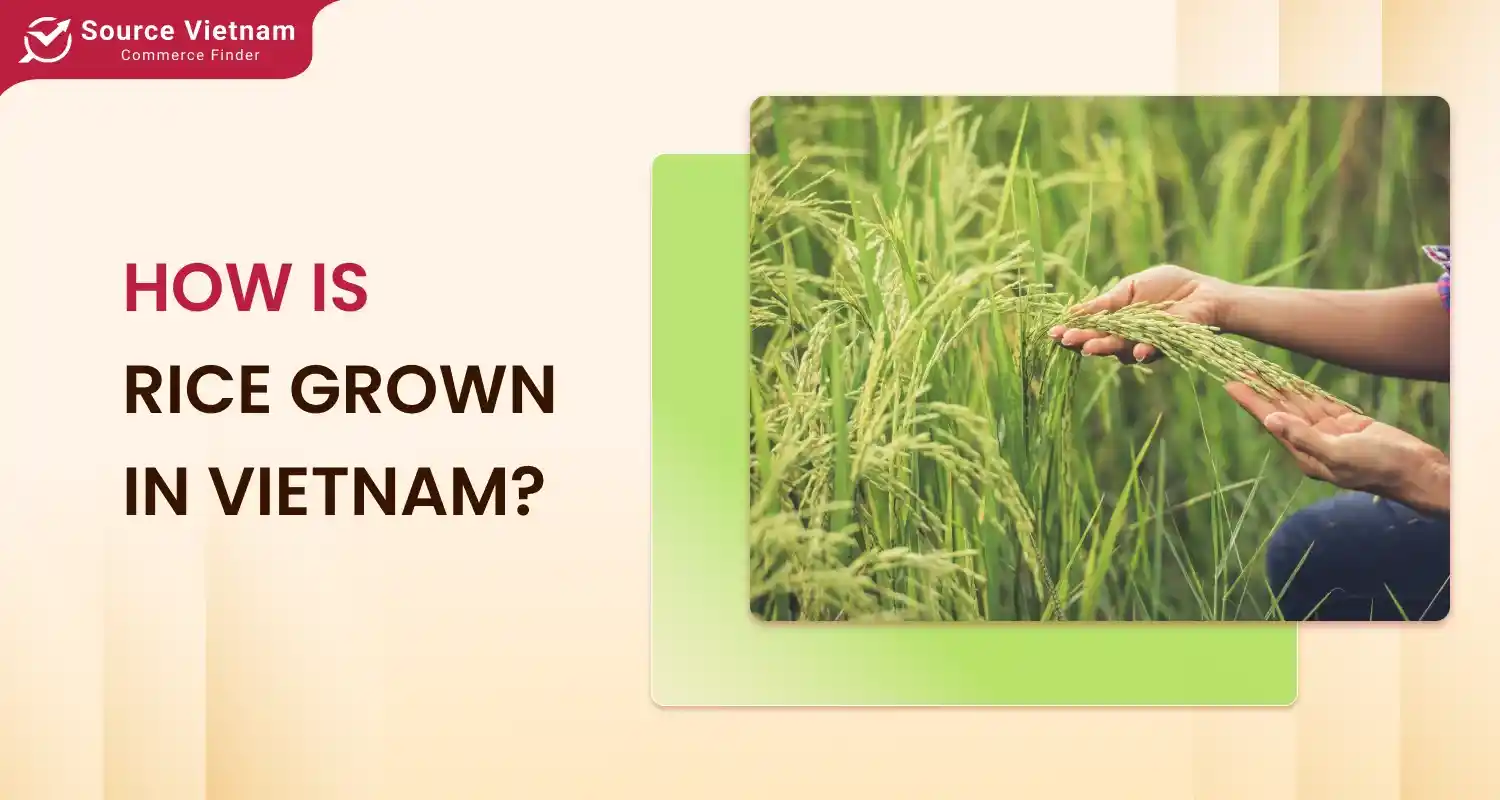
Discover the rich history of Vietnam rice farming for a deeper understanding of the labor and dedication behind each grain of rice.
Rice farming in Vietnam: A historical perspective
Ancient origins
Rice cultivation in Vietnam has a long history, from thousands of years ago. Since the Dong Son culture period (around 2000 BC), ancient Vietnamese people have known how to cultivate rice, using bronze tools to improve labor productivity. This proves the remarkable development of agriculture and lays the foundation for rice growing in Vietnam.
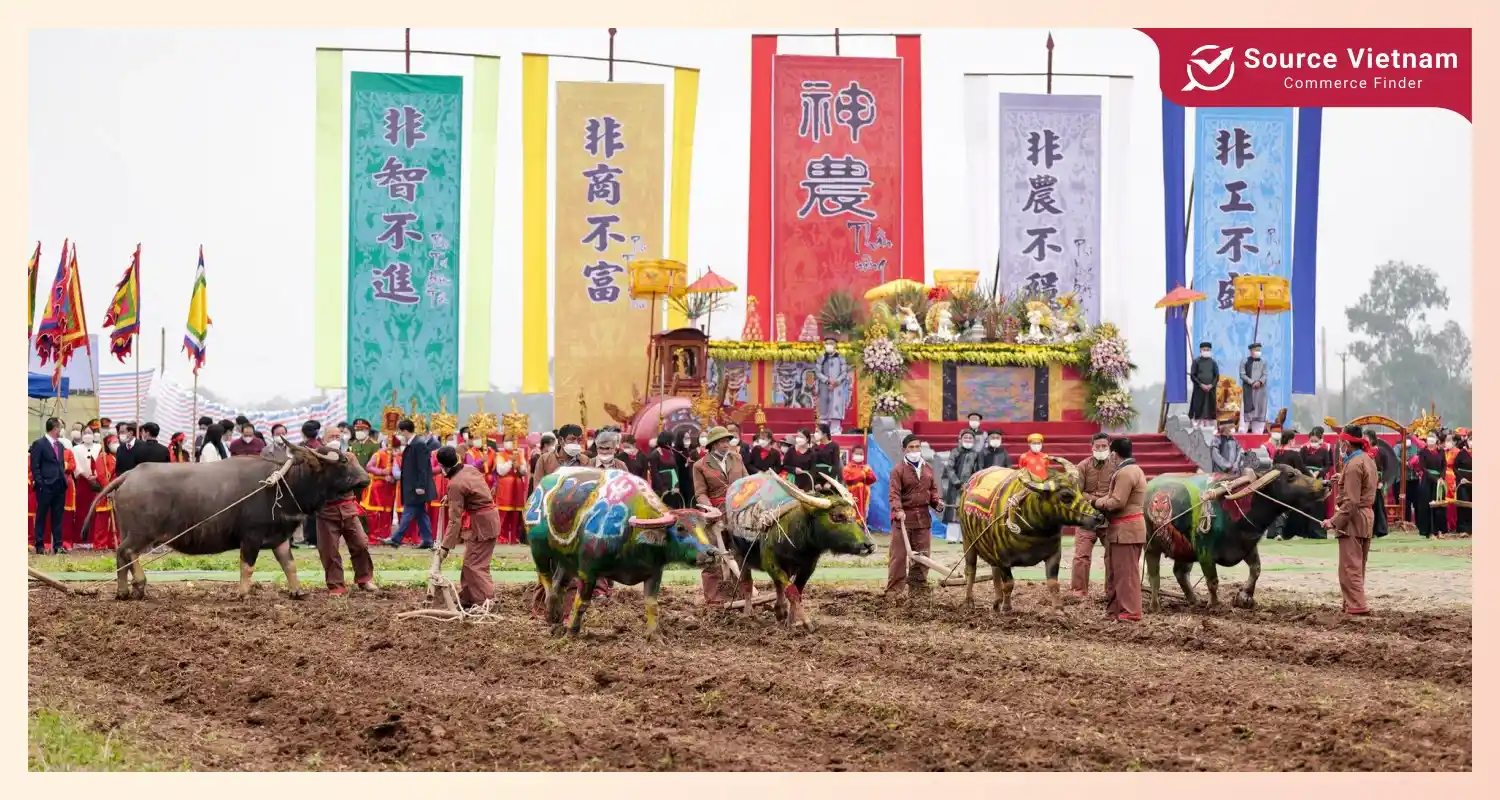
Throughout history, Vietnam rice farming has been closely associated with people’s lives here, from economy to culture to beliefs. Agricultural festivals such as the rain-praying and Tich Dien festivals are held to honor the land and gods and wish for a bountiful harvest. At the same time, folk songs and sayings such as “First water, second fertilizer, third diligence, fourth seeds” also reflect understanding and valuable experience in farming.
The history of rice cultivation in Vietnam is simply a story of cultivation. Moreover, it’s a symbol of resilience, creativity, and love for the motherland of Vietnamese people through many generations.
Cultural significance
Rice is not only a staple food but also has a profound cultural significance in the lives of Vietnamese people. Since ancient times, rice growing in Vietnam has been present in important rituals such as ancestor worship, praying for a good harvest, or weddings. Its growth accompanies iconic symbols such as Banh Chung and Banh Giay (sticky rice cake) symbolizing heaven and earth. In agricultural festivals such as Tich Dien or the new rice festival, rice represents gratitude to heaven and earth and the wish for a bountiful harvest.
Besides its material value, rice is also the “soul” of family meals. It is a characteristic feature of Vietnamese cuisine through Pho, rice vermicelli, and steamed rolled rice pancakes. As a symbol of abundance and diligence, each grain of rice is imbued with the efforts of farmers, connecting people with Mother Earth and preserving national identity through many generations.
Read more: 10 Reliable Rice Suppliers in Vietnam for Bulk Orders and Export
Rice cultivation regions in Vietnam
Mekong Delta rice farming
The Mekong Delta is the biggest “rice storage” in Vietnam, giving more than half of the country’s rice. Its fertile soil and warm weather year-round make it suited for growing rice. The vast green rice fields and the intricate river system help farmers easily grow rice and harvest many crops yearly.
Red River Delta rice farming
The Red River Delta is also the major rice-growing region in northern Vietnam. It has a long tradition of rice cultivation, with a solid dike system to protect crops. People in the Red River Delta are not only good at growing rice but are also very creative in improving the land to ensure stable yields, especially in the harsh weather conditions in the North.
Other regions
How is rice grown in Vietnam, especially in the Central and highland regions? They are also two large deltas rice farming. Although the Central region often experiences drought, people still find ways to grow drought-resistant rice varieties. Meanwhile, the Central Highlands and the northern mountainous provinces stand out with unique terraced rice fields, both a place for cultivation and a beautiful landscape, attracting tourists.
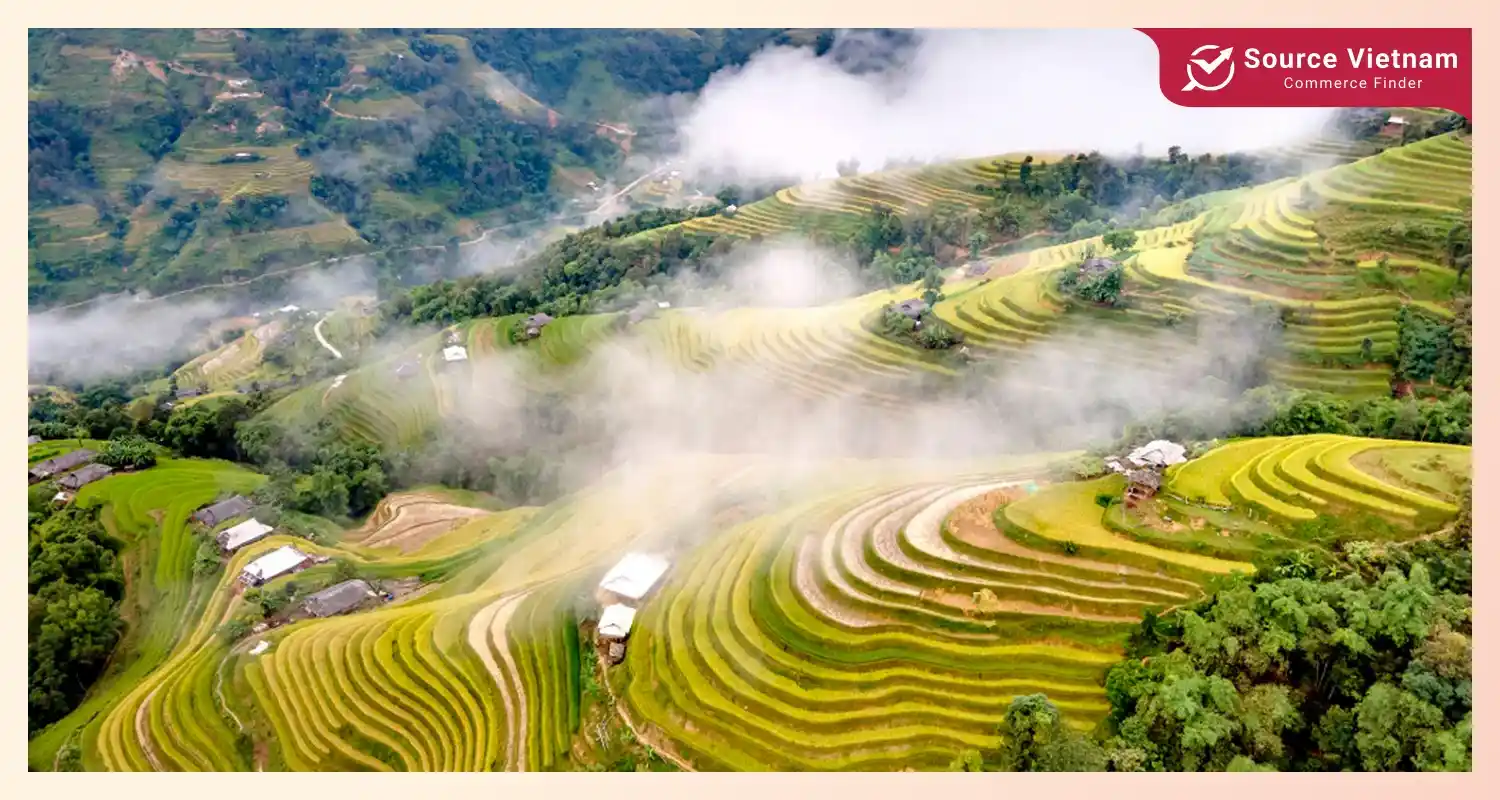
How is rice grown in Vietnam?
Land preparation
Land preparation is the first and most important step in traditional Vietnam rice farming. Farmers often start by cleaning the paddy fields and removing weeds to create the best conditions for growing rice plants.
The popular rice farming technique in Vietnam is plowing the fields with water buffaloes’ pulling power. Buffaloes are considered farmers’ “companions”, helping to plow the soil deeply and evenly. In some areas, especially mountainous areas with difficult terrain, people often use hoes and hand plows to process the soil. Although it takes a lot of effort, this method is still maintained by many people because it is suitable for local conditions and preserves traditional farming methods.
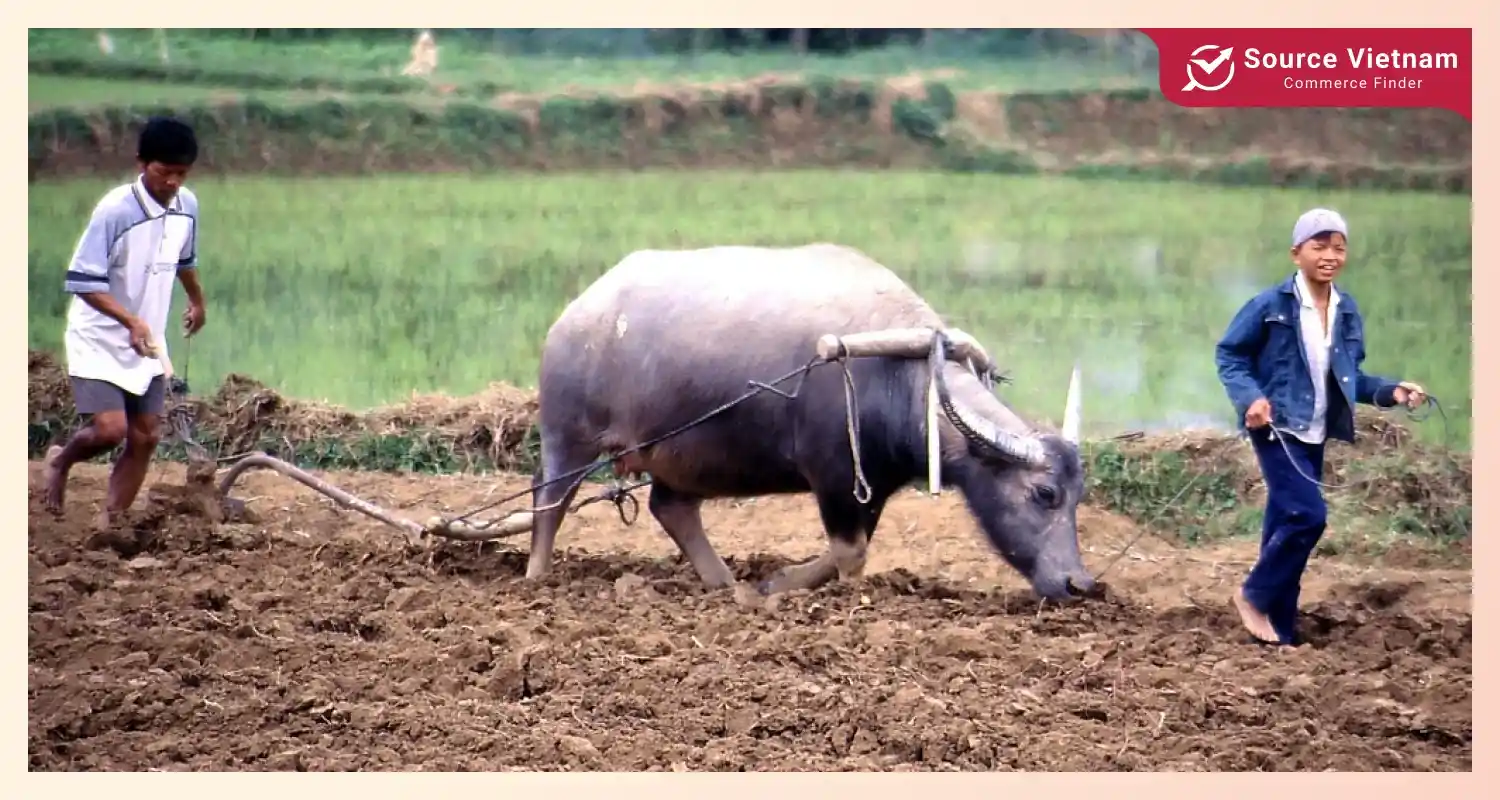
After the land is plowed, farmers continue to harrow the soil to loosen it, retain water, and create a flat surface for sowing or transplanting rice seedlings. This stage requires technique and perseverance, demonstrating the diligence and long-standing attachment to the farming of the Vietnamese people.
Planting
Hand-transplanting rice is a traditional method widely used in Vietnam rice farming, especially in rural areas where infrastructure is not yet developed. This process requires meticulousness and high technical skills from Vietnam rice farmers.
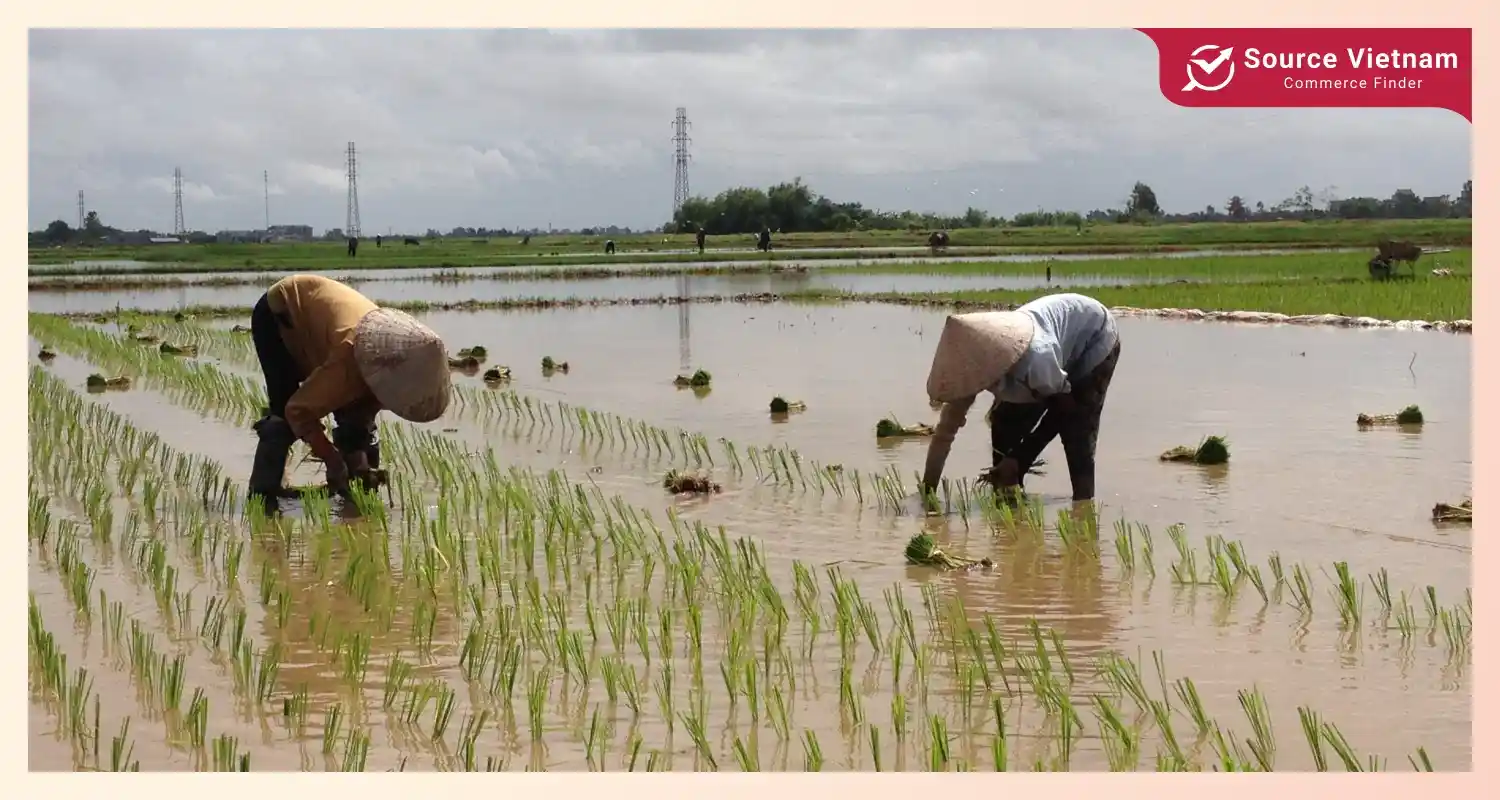
Below is the process of hand-transplanting rice in Vietnam:
- Sowing seedlings: Seedlings are sown in nursery soil and cared for about 30-35 days until the rice plants have 3-4 young leaves.
- Preparing the rice field: After plowing and harrowing, the field is kept moist and leveled for planting.
- Planting seedlings: Farmers plant each seedling in the field, inserting the rice plant into the ground so that only the stem is above the ground.
- Planting distance: Plant each rice plant at a distance sufficient for the plant to grow without lacking nutrients.
- Keep the field moist: After planting, keep the field moist to ensure the rice plants grow healthily.
- Control and care: Monitor rice growth and adjust the amount of water in the field so that the rice in Vietnam can grow well.
Although this work is very hard and time-consuming, many farming families still maintain it because this method helps to control the quality and yield of the rice crop effectively.
Irrigation
Water is crucial for rice fields, as rice plants require much of it. This helps the rice grow well and affects its quality.
Water is very essential for rice, especially in the main growth stages of starting to grow, rooting, and getting bigger. Sufficient water keeps rice plants healthy, prevents them from drying out, and clears away weeds and pests.
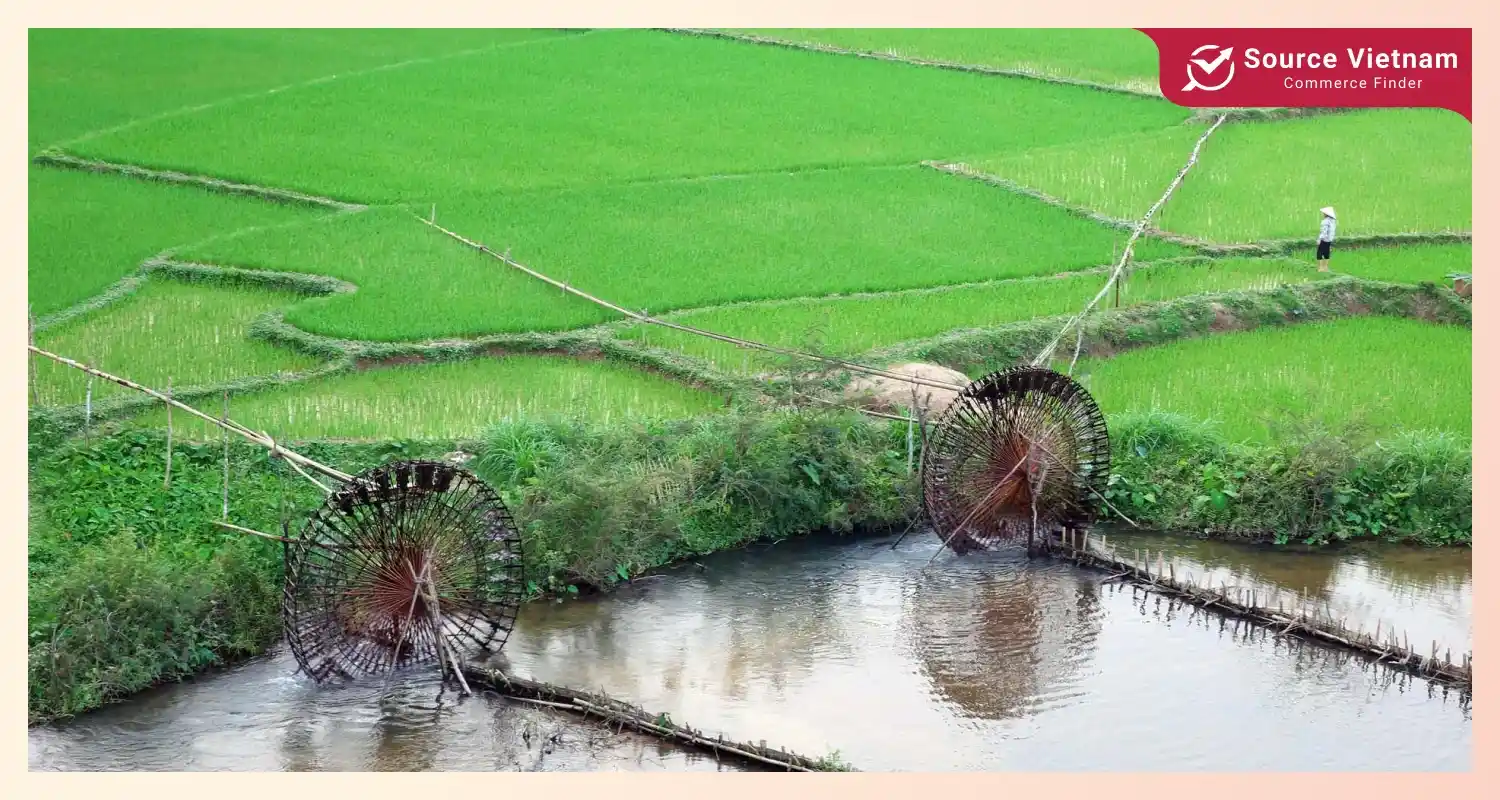
Traditional irrigation techniques
- Canal irrigation: Farmers often use canal systems to bring water from rivers or other sources into the fields. This is a common, affordable method.
- Water retention irrigation: After transplanting, farmers flood part of the field to keep the soil moist for the rice in Vietnam. After each harvest, water levels are carefully managed to avoid flooding or drought.
- “Dry rice” irrigation: In some areas, like the Central and Central Highlands, Vietnam rice farmers use a method where they don’t keep water on the fields for too long, only adding water when needed. This helps conserve water during the dry season.
- Adjusting water levels: Farmers regularly check and adjust the water levels in their fields, ensuring rice plants have enough water but avoid overflooding or water shortages.
These traditional irrigation methods require skill and experience to help farmers protect their crops from natural challenges.
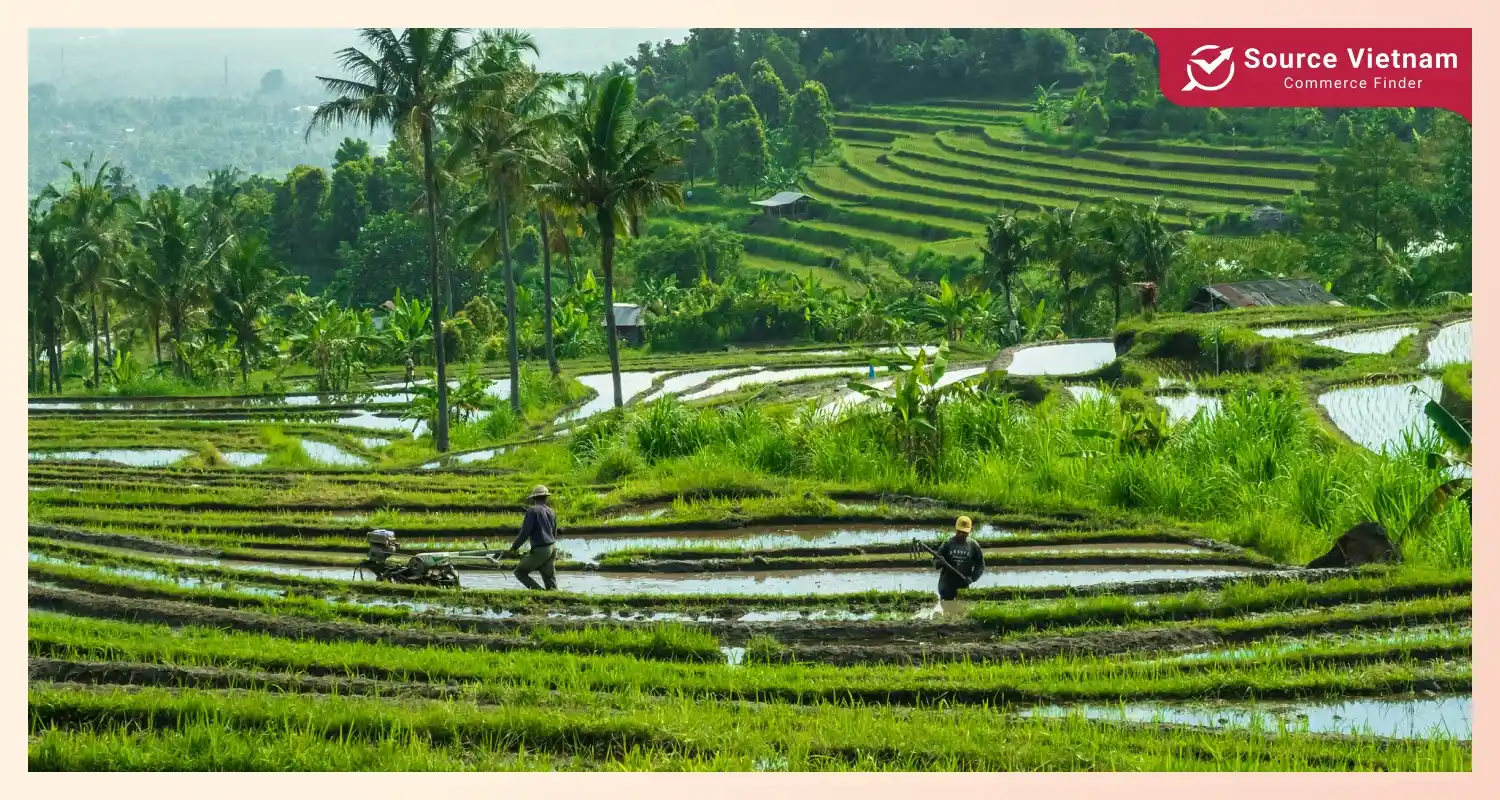
Read more: How to Import Rice from Vietnam to Philippines: Tips & Guide
How is rice harvested in Vietnam?
Harvesting rice by sickle is a traditional work Vietnamese rice farmers have done for many years. This job requires farmers to be careful and pay attention to detail.
- Rice cutting using a sickle: The farmers wait until the rice has ripened, then cut every rice plant with a sickle. The sickle has a sharp, curved blade that cuts through the rice cleanly without hurting the grains themselves, keeping the roots so they can be replanted next season.
- Bundling rice: After cutting, people gather the rice into small bundles and tie them up to take home to dry or store. These rice bundles are then dried to prevent them from getting moldy and to preserve them for an extended period.
- Harvest Care: The farmers must be meticulous during harvesting to ensure that no rice is left behind and to monitor the weather so that it does not affect the rice quality.
Harvesting by hand with a sickle is hard work, but it’s also a part of the beauty of rice growing in Vietnamese culture. It speaks of hard work and love for the land.
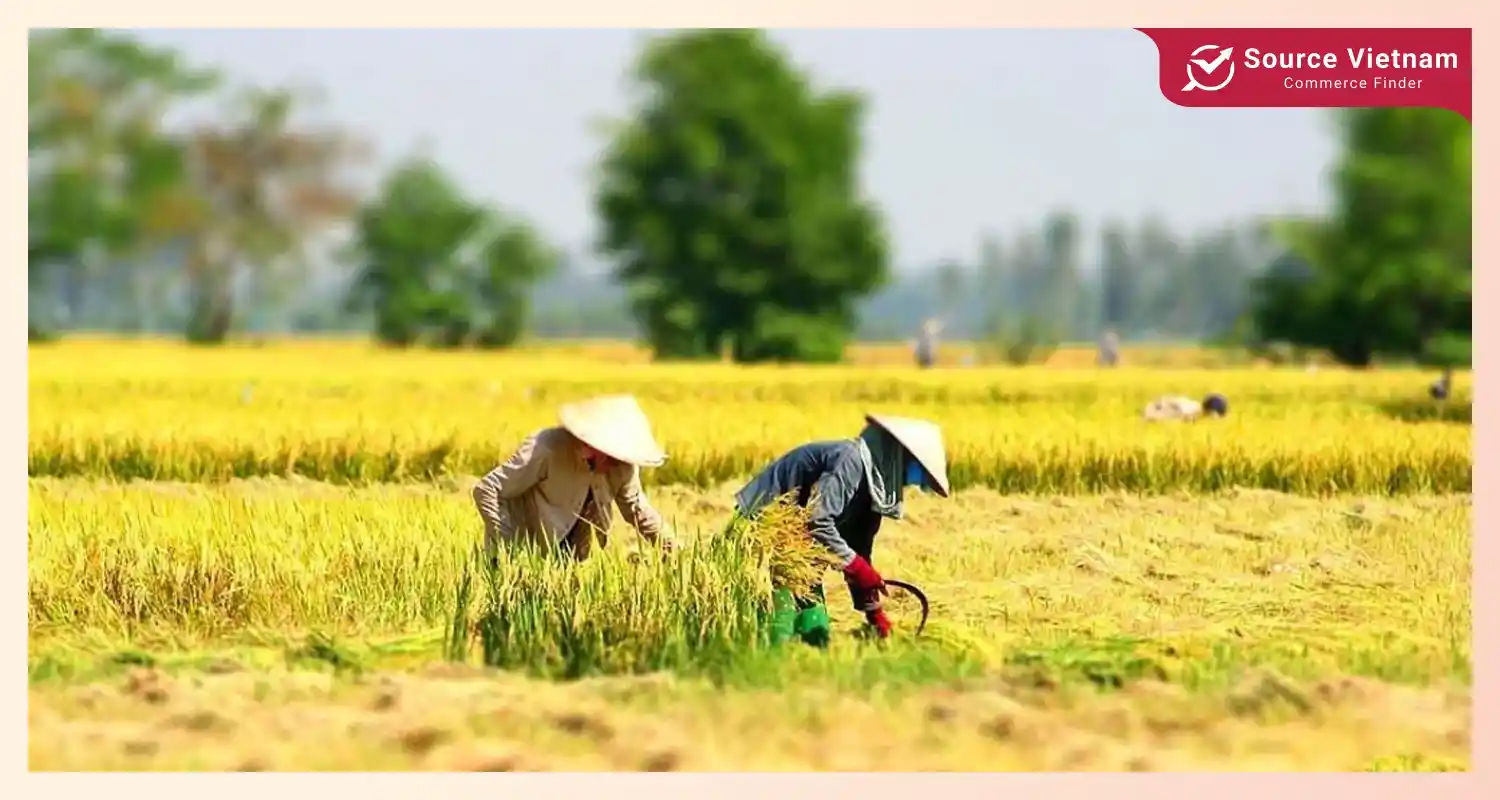
Read more: Jasmine Rice vs. Basmati Rice: Which One Is Best?
Modern rice farming techniques in Vietnam
Improvements in productivity and efficiency in rice cultivation have been occurring unceasingly in Vietnam. New technologies and tools applied to rice farming bring many advantages to farmers.
Mechanization
Using rice farming equipment in Vietnam saves farmers from consuming too much time and energy. Tractors, such as plowing, are used for land preparation, making it faster and easier than manual labor. Instead of manual labor, harvesters are used to cutting the rice quickly and without missing any, making the job lighter for farmers.
Improved irrigation
Modern irrigation systems help use water better. These technologies control water resources, making sure that rice always gets enough water during its growth without wasting any. Automatic irrigation systems also make it easier to irrigate and protect rice fields from not having enough water or flooding.
High-yielding rice varieties
New types of rice that survive hard weather and can produce a lot were introduced, which helped to raise rice production for each crop. These types not only boost productivity but also make rice better and fulfill the growing demand in the market.
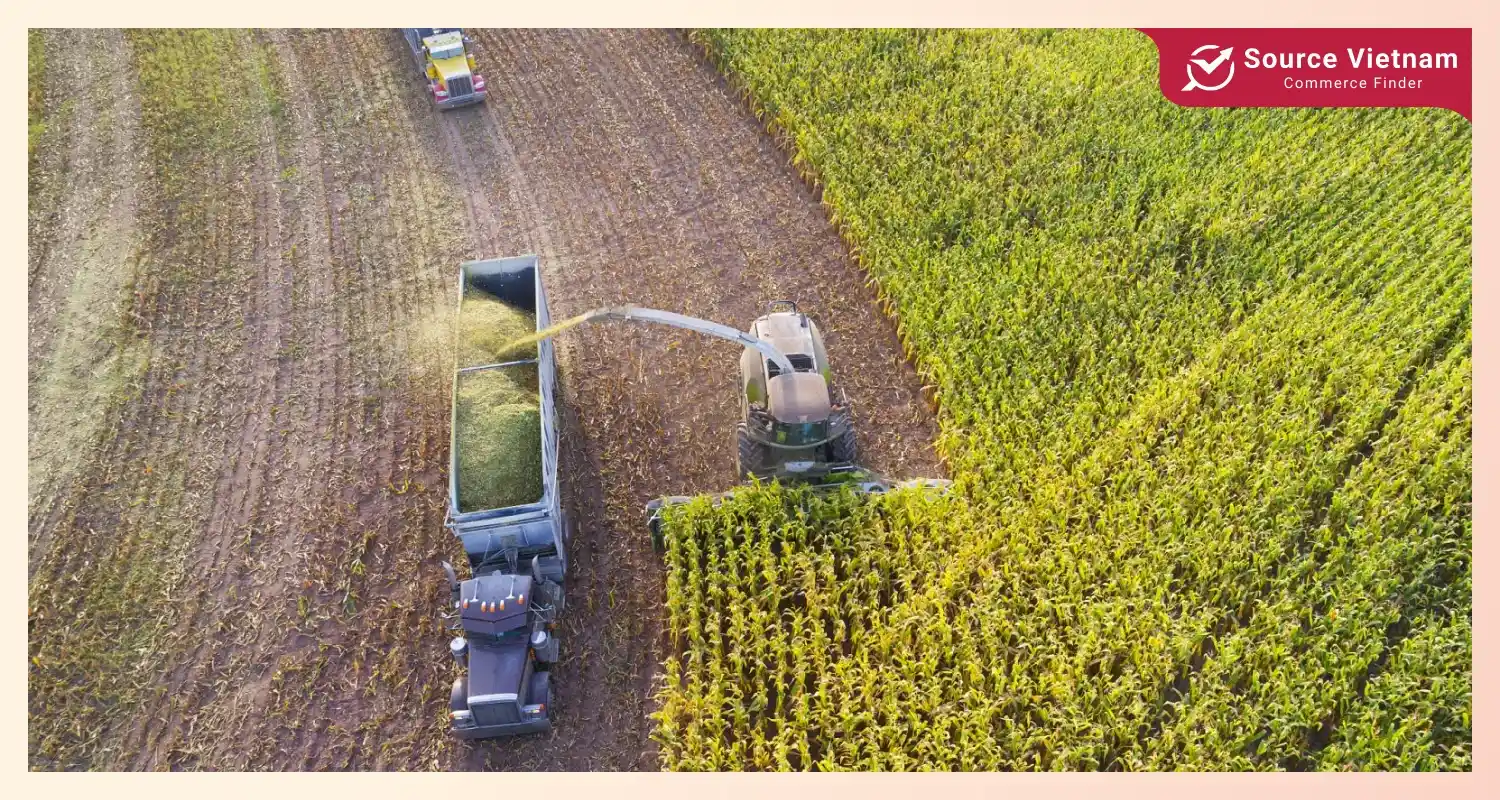
Read more: Wafer Paper vs Rice Paper: Key Differences and Uses Explained
Sustainable rice farming practices in Vietnam
Sustainable rice farming in Vietnam is gaining increasing attention with methods such as:
- Organic rice farming: Growing rice without chemicals protects the health of consumers and the land.
- Crop rotation: Changing crops to improve soil quality and control pests.
- Pest management: Using biological and mechanical methods instead of using chemical pesticides.
- Water conservation: Applying water-saving irrigation to reduce water use, protecting resources.
Learn about sustainable practices shaping the future of rice farming in Vietnam. These practices help increase productivity and protect the environment.
Read more: Jasmine Rice vs. White Rice: Key Differences Explained
Challenges facing rice farming in Vietnam
Rice farming challenges in Vietnam are beset with so many problems affecting the production and livelihood of farmers:
- Climate change: extreme weather conditions such as drought, flood, and saltwater intrusion occur frequently. This grossly affects rice yields and causes production instability.
- Market competition: Vietnamese rice must compete with large-producing countries like Thailand and India in the international market. All this makes rice prices unstable and presses farmers for further pressure.
- Land use change: Cities are expanding, and more industries are taking away farmland, making it difficult to grow rice.
Learn about the problems with how rice is grown in Vietnam today – these issues threaten the long-term growth of rice farming.
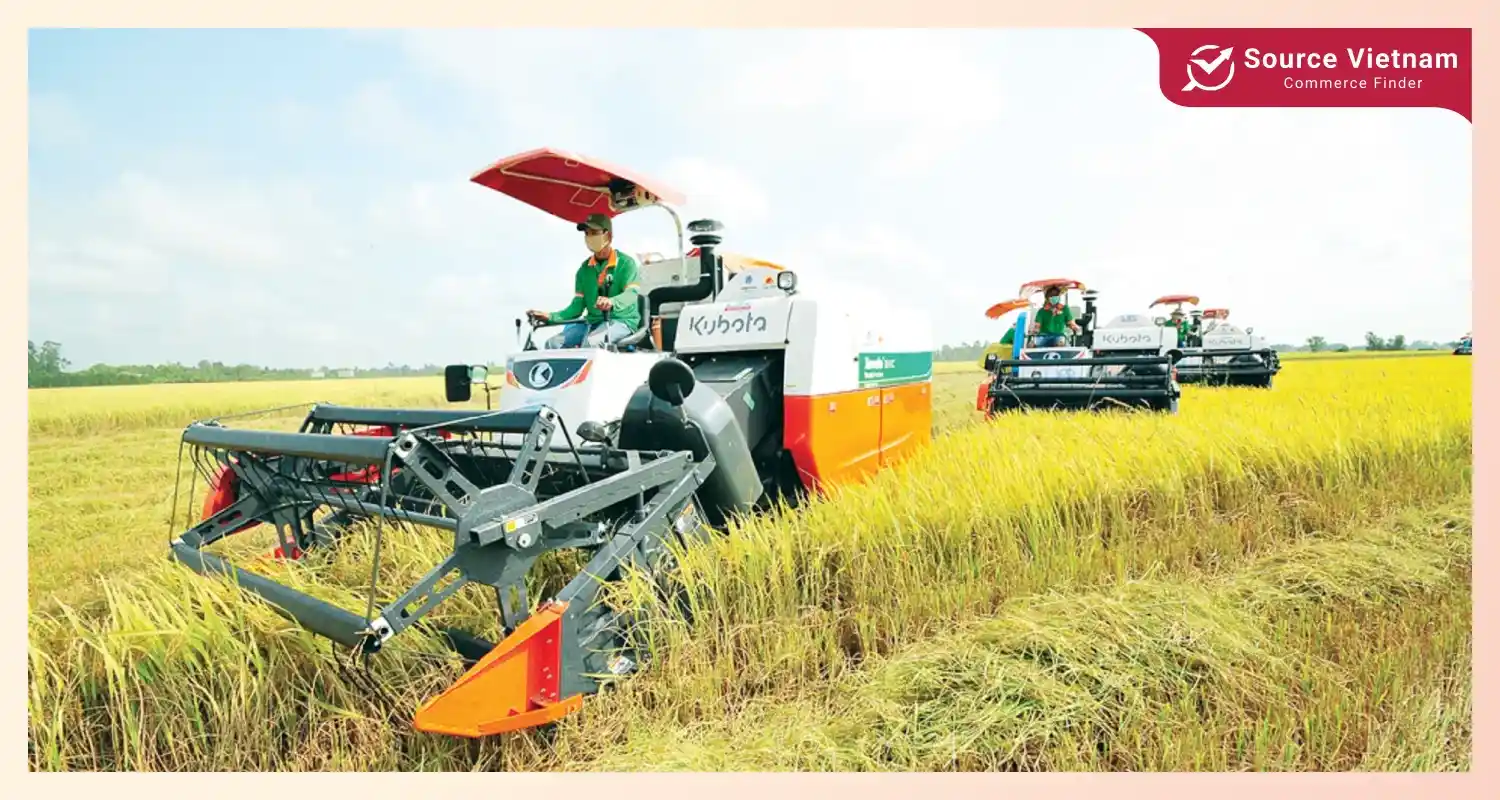
The future of Vietnamese rice farming
Rice cultivation in Vietnam is moving toward a more sustainable and prosperous future:
- Increasing sustainability: To ensure high productivity while protecting the environment, sustainable farming methods, such as organic farming, water conservation, and soil conservation, must be applied.
- Adopting technology: Technology will play an important role in improving the rice farming process, from using modern machinery to applying technology in water management and crop monitoring, helping to improve production efficiency.
- Research and development: Organizations such as the International Rice Research Institute (IRRI) and the Vietnamese Ministry of Agriculture and Rural Development are working to develop new rice varieties.
They also support Vietnam rice farmers in applying advanced techniques to improve their productivity and quality.
Conclusion
Vietnam’s mastery of rice cultivation reflects its rich history, cultural significance, and forward-looking vision. Understanding how is rice grown in Vietnam reveals the labor, creativity, and commitment behind every grain. As the country navigates environmental and economic challenges, the focus on sustainable farming and innovation highlights its dedication to preserving this vital industry. Vietnam’s rice fields are not just landscapes but the heart of a nation.
To find reliable rice suppliers, check out Sourcevietnam.com to connect with many verified wholesalers at reasonable prices.
FAQs
What are the main types of rice grown in Vietnam?
There are many types of rice in Vietnam, but jasmine, sticky, and white rice are typical varieties. These types are appreciated for their good smell, taste, and flexibility. Jasmine rice is one of the significant products sold abroad.
How many times a year is rice harvested in Vietnam?
In most regions, rice is harvested 2 to 3 times yearly due to the good tropical weather in Vietnam and its modern cultivation style.
What are the issues for rice farmers in Vietnam?
Rice farmers face various problems: climate change causes drought, floods, and salt in the soil; urban growth takes away farmland; and competition in the market makes rice prices unstable.
How do Vietnamese farmers address challenges such as water scarcity?
Vietnamese farmers increasingly adopt sustainable practices like alternate wetting and drying (AWD) to manage water use more efficiently. This method periodically floods and drains rice fields, reducing overall water consumption while maintaining yields. Farmers are also exploring new irrigation techniques and crop varieties that require less water.
How is Vietnam encouraging sustainable rice farming?
Vietnam encourages sustainable farming, including adopting organic cultivation, modern irrigation systems, and high-yielding, climate-resistant rice varieties. Initiatives by organizations like the Ministry of Agriculture and partnerships with international groups further support these efforts.

